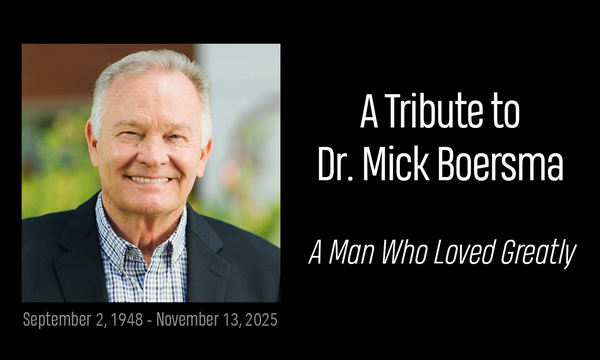LESSONS ON LEADERSHIP FROM THE PASTORAL EPISTLES, PT. 2:
MULTIPLYING MENTORSHIP
The whole mentorship movement continues to increase in popularity especially within the church. Many young people today are seeking out mentors. This even seems to be a value for the younger generation. But in actuality, this movement is not a new one at all but rather one that dates back even to the first century.
The Pastoral Epistles gives us a good glimpse of this process. For example, the Apostle Paul practiced and emphasized the idea of mentorship by investing in the lives of a young Timothy and Titus. He also exhorted the older men and older women to mentor the younger men and younger women in Titus 2:2-8. And probably the most well known passage regarding mentorship is seen when Paul speaks to a young Timothy in 2 Timothy 2:2.
In this last letter by Paul, he gives some final instructions to Timothy and the church of Ephesus in order help ensure a future for them. One of these teachings involves the idea of mentorship. But not just regular mentorship that is limited to one generation but rather a multiplying mentorship that would continue on to many generations in the future. Paul writes “The things which you have heard from me in the presence of many witnesses, entrust these to faithful men who will be able to teach others also.”
There are two key characteristics of this passage that make it a multiplying mentorship. The first is that it spans more than one generation. It actually passes down to three generations in this passage. First, Paul invests into the life of Timothy. Next, Timothy teaches faithful men. Finally, this is followed by the faithful men then training up others. With this kind of commitment, there is a long-term plan to train and develop leaders. When applied practically, the encouragement and challenge should be given to the leader that he or she is not just to develop a mentor but rather to develop a mentor who will develop other mentors.
Another unique characteristic of this passage is that it done in a way that multiplies the reproduction of mentors not just one that just adds them. Thus, this entails embracing a communal approach to developing leaders rather than an individual one. It seems that the whole notion of a one-on-one mentorship is favorable in our Western culture. While this may be advantageous in some situations (i.e. counseling, specific coaching, friendships, meals, etc.) it actually was not so common within the context of the New Testament.
Going back to the Gospels, we see that Jesus typically trained people in groups. He worked with the inner circle of three, with the twelve disciples, as well as with the seventy. Other than a few interviews and encounters with individuals, it seems that Jesus utilized the multiplication idea with the people that He trained.
This is also true with the Apostle Paul. He typically traveled together in groups or bands of people. This was his way of training people within a life on life situation. This pattern seemed not only consistent but strategic in that it could reach more people faster than if it were done one by one. Perhaps, the one on one mentality may be a symptom of the largely individualistic culture that we see in the modern practices of the West.
In 2 Timothy 2:2, we clearly see that the second and third generations of mentorship were done in groups. Timothy worked with faithful men (plural) and also that those faithful men also worked with others (plural). But what about the first phase of Paul’s mentorship dealing with Timothy? Isn’t that a biblical example or support for the one-on-one idea of mentorship? At first glance, it certainly appears that way. But a closer read finds an important statement inserted in the text. It says “in the presence of many witnesses.” This same phrase was also used earlier in 1 Timothy 6:12. In both contexts, there is a communal element of not just one individual involved but instead many people. So in actuality, all three phases of the generational training involves groups of people rather than the idea of a one-on-one situation.
Again, this also lends to a strategic plan as well. Rather than just training and developing a potential leader one at a time, it could be accomplished with many people at a time. As a result, many leaders could be developed over a relatively short period of time. This prescription to leadership development and the raising up of mentors has definitely proven to be a successful formula through the ages.
So as a leader in the church, how are you investing in the future of leaders for your church? Is mentorship even a priority? It should be! And if it is, are you doing it according to the brilliant prescription of the Scripture? A mentorship that not only looks long-term but also embraces a communal approach to developing leaders in a multiplying manner.
My own personal experiences have been wonderful in this particular area of multiplying mentors. Since I’ve adopted this value at a very early stage of my ministry, it has become a part of my philosophy of ministry wherever I go. As a result, this has also become the culture of the churches that I have had the privilege to be a part of. We have always valued multiplying mentorship and we have seen many positive results. One of the strongest outcomes from this is that we have always been able to train and raise up leaders from within the church rather than having to go outside. Since these people already have vested interest and established relationships with the congregation, it makes the transition to leadership relatively easy. How about your churches? Is there a plan at all to train and multiply mentors for the future? If not, take a good long look at 2 Timothy 2:2. You won’t be sorry!
 Biola University
Biola University


.jpg)
.jpg)